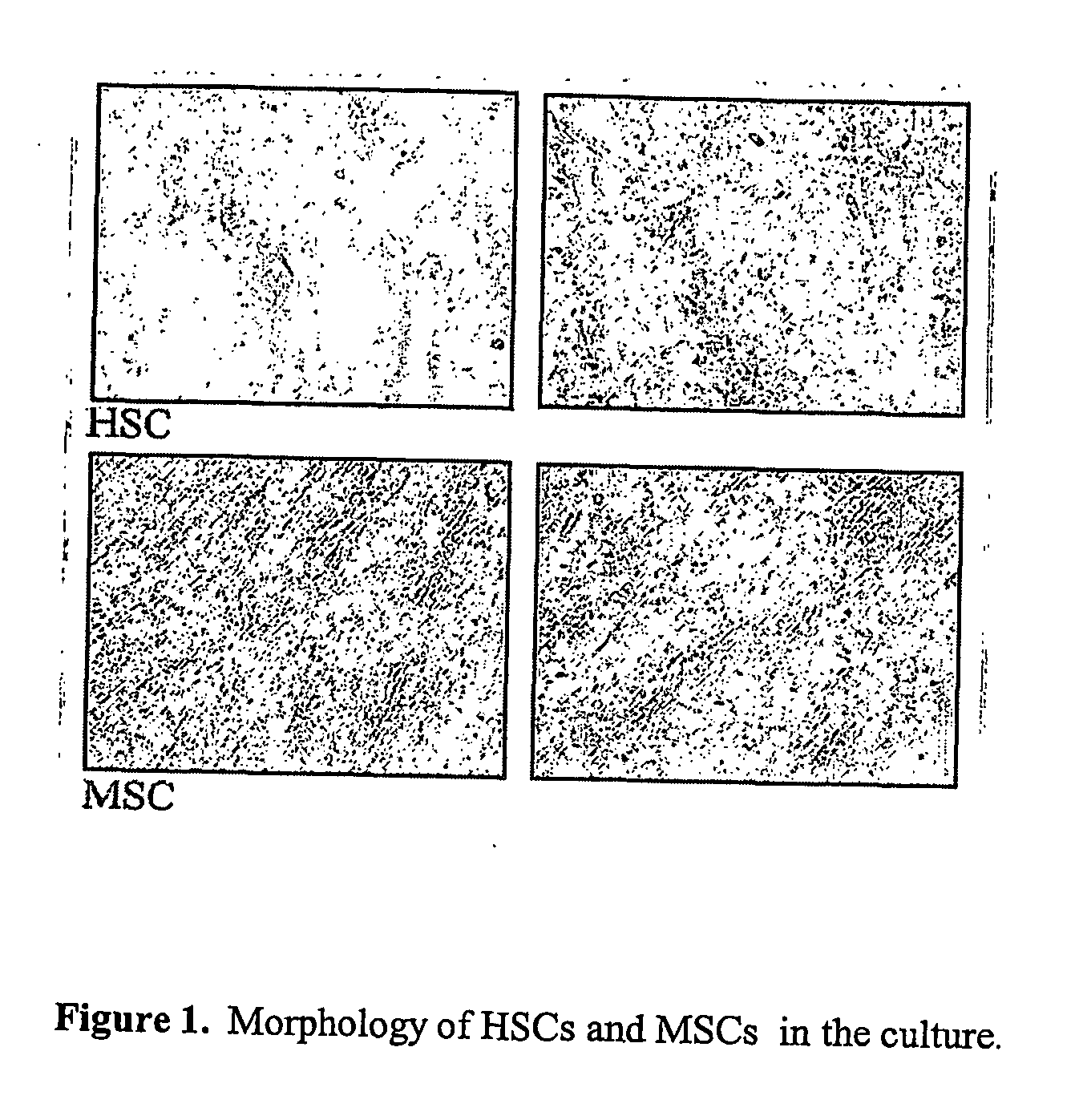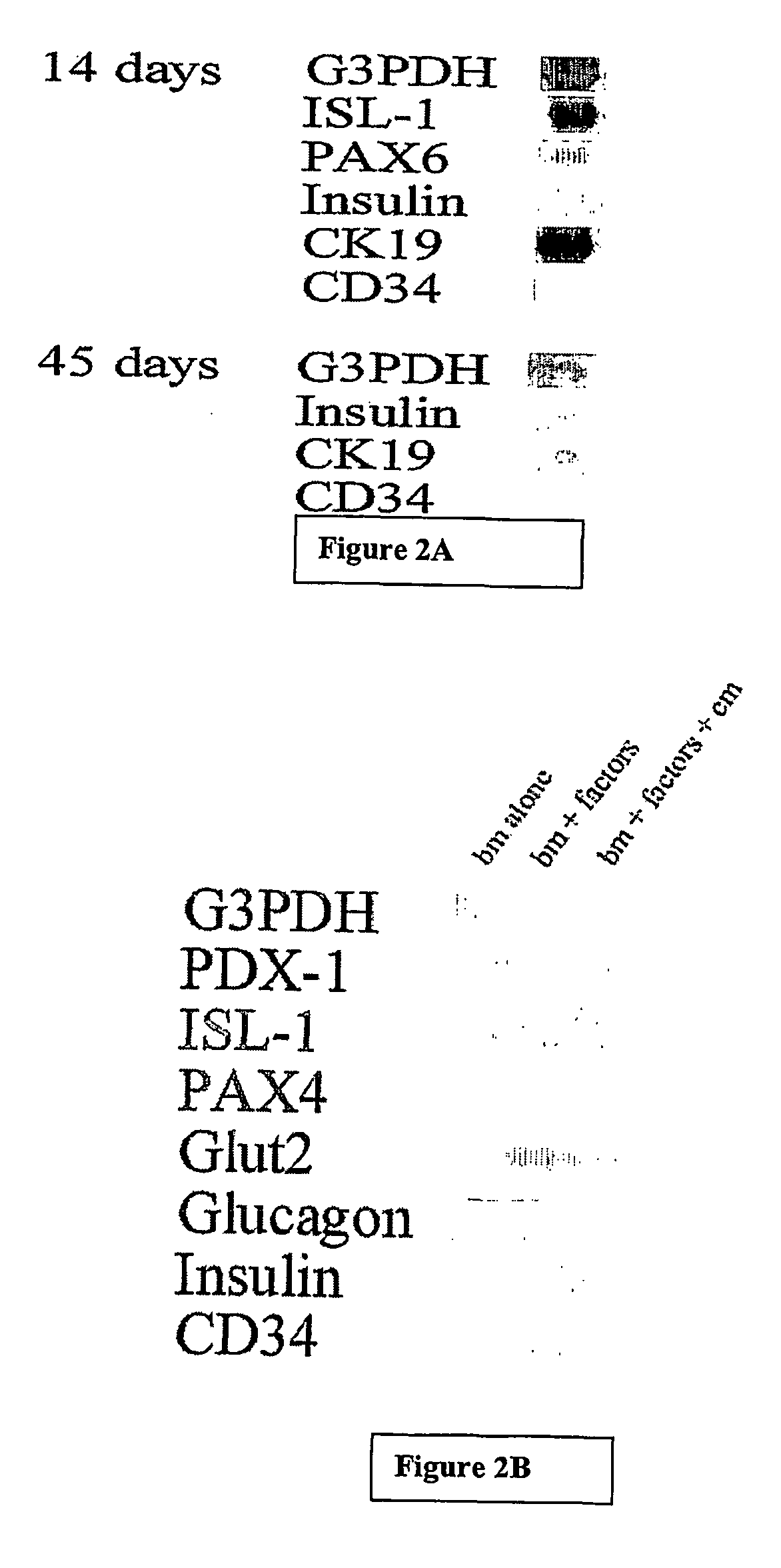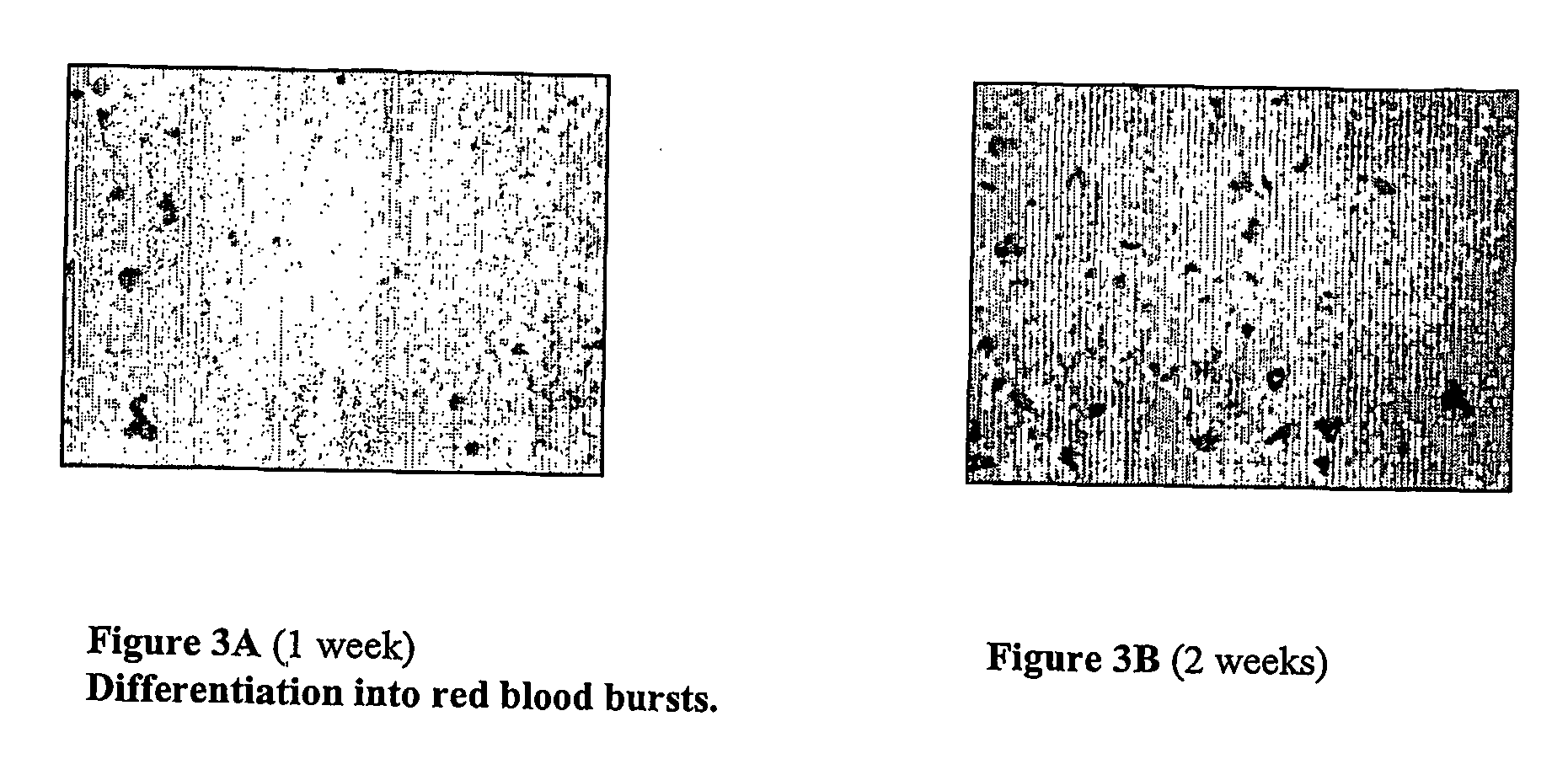Method for transdifferentiation of non-pancreatic stem cells to the pancreatic pathway
- Summary
- Abstract
- Description
- Claims
- Application Information
AI Technical Summary
Benefits of technology
Problems solved by technology
Method used
Image
Examples
example 1
Characterization of Human Bone Marrow Derived MSCs in Terms of Their Abilities to Form Islet-Like Clusters and Their Differentiation Potential Under Such Circumstances In Vitro
[0041] Human bone marrow MSCs are purchased from Clonetics (BioWhittaker, Walkersville, Md.) for all studies. Since media combination 4 has proven to be effective, and media combination 5 is being tested, all 5 combinations of media (Table 4) are used. Briefly, 0.5×106 MSCs are plated in low-binding tissue culture plates (6 well clusters). Cultures are for 1, 2 and 4 weeks with media change every 2-3 days. At the end of time points cells are subjected RT-PCR for pancreatic differentiation pathway as described below. Clusters are also fixed in 4% formalin, immobilized in 4% low-melt agarose for tissue sectioning and immunohistochemistry. Once a more efficient differentiation medium condition is found (currently, media combination 4 appears good; but other combinations have not been tried with clustered cells),...
example 2
Characterization of MSC Derived Islet Clusters in Terms of Their Physiological Functions In Vitro
[0048] Preferably, only the best differentiation combination media is used for the physiological studies. MSC derived islet clusters are used in optimized standard operating procedures (SOPs) to determine in vitro glucose-responsive insulin secretion at different time points in static incubation cultures as well as glucagon production to evaluate the reproducibility, stability of differentiated phenotype, metabolic features (e.g., glucokinase / hexokinase ratio), sensitivity to counter-regulatory hormones (i.e., somatostatin and glucagon), phosphorylation pattern following glucose binding to its receptor, and potential for “reverse” differentiation into mesenchymal derivatives (e.g., fat cells) following appropriate treatment.
[0049] Insulin and glucagons testing procedures have been already described above. The differentiated clusters can be maintained in differentiating media as well as...
example 3
Characterization of In Vivo Functionality of MSC Derived Islet Clusters in NOD-Scid, Nod Mice and In Vivo Migration Pattern of Implanted Cells
[0054] Human MSC derived differentiated clusters can be implanted in the immune-deficient female NOD-Scid mice, followed by implantation in autoimmune NOD. Diabetes can be induced in Scid mice using 160 mg / kg body wt streptozotocin (STZ). This is a routine procedure done in our labs. There can be 1 group of mice with human islets (n=6; 600 islets per animal) and 4 groups of mice with differentiated clusters (n-6 per group; 4 doses of clusters-300, 600, 1200, 2400; therefore totally 24 mice). Implant site is preferably the kidney capsule. Similar studies can be done with diabetes induced female NOD mice (therefore a total of 24 mice). NOD mice can receive immunosuppressive drugs sirolimus (Wyeth-Ayerst) (0.1 mg / kg) and tacrolimus (Fujisawa Canada) (1.0 mg / kg) starting 3 days prior to implantation. After determining the best dose for reversal o...
PUM
 Login to View More
Login to View More Abstract
Description
Claims
Application Information
 Login to View More
Login to View More - R&D Engineer
- R&D Manager
- IP Professional
- Industry Leading Data Capabilities
- Powerful AI technology
- Patent DNA Extraction
Browse by: Latest US Patents, China's latest patents, Technical Efficacy Thesaurus, Application Domain, Technology Topic, Popular Technical Reports.
© 2024 PatSnap. All rights reserved.Legal|Privacy policy|Modern Slavery Act Transparency Statement|Sitemap|About US| Contact US: help@patsnap.com










